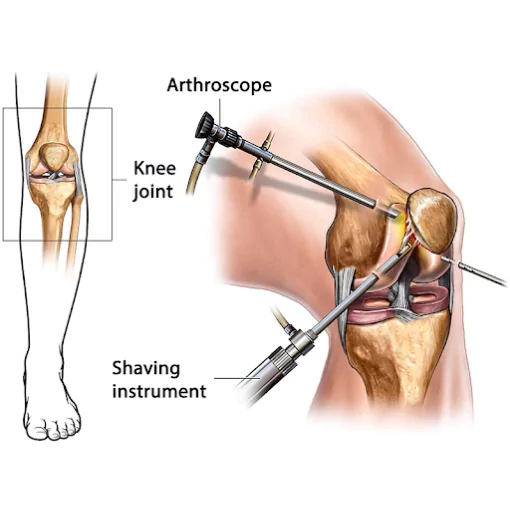- +91 62384 78716 +91 99475 78797
-
Sasthamangalam, Trivandrum
Sasthamangalam, Trivandrum
Arthroscopy or Arthroscopic surgery is a surgical procedure used to identify, visualize and treat any issues within joints using a special instrument called an arthroscope.
Arthroscope is afiberoptic tube containing a small camera or lens and lighting equipment to magnify and illuminate joint anatomy. The camera mounted to the arthroscope projects pictures of joint structures on a television screen, allowing surgeons to inspect the joint or other areas, such as ligaments, cartilage, and tendons to perform the repair.
Arthroscopic surgery procedure can be done at any joint. Shoulder and knee arthroscopy is the most frequently conducted procedure to repair cartilage injuries, meniscus, and rotator cuff tears. Here are some of the common types of arthroscopic surgeries:
Arthroscopic surgeries are used to treat and diagnose a wide range of conditions. In most cases, the procedure is suggested for:
The surgery is performed under local or general anaesthesia. Following a thorough cleaning of the operative region, the surgeon makes tiny keyhole incisions through which the arthroscope and other small devices created specifically for the surgery are inserted. Water is then irrigated into the joints to eliminate any blockages and to improve vision. The camera that is attached to the edge of the arthroscope permits the doctor to observe the joints’ structures via a TV screen and damaged structures are fixed. The arthroscope and instruments are then removed and the surgical cuts are closed using sutures or dressings made of sterile material.
The following are some of the advantages of arthroscopic surgery over traditional open surgery:

Copyright © 2025 Dr. Ganesh Navaneedhan. All Rights Reserved. | Designed By Harvee healthcare